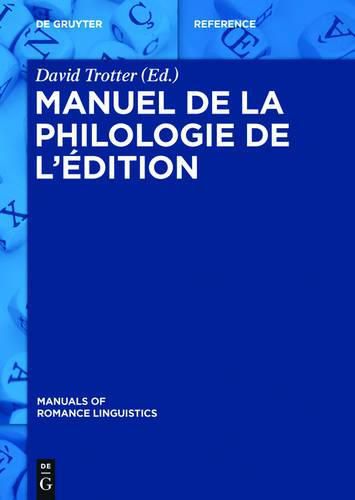Readings Newsletter
Become a Readings Member to make your shopping experience even easier.
Sign in or sign up for free!
You’re not far away from qualifying for FREE standard shipping within Australia
You’ve qualified for FREE standard shipping within Australia
The cart is loading…






This title is printed to order. This book may have been self-published. If so, we cannot guarantee the quality of the content. In the main most books will have gone through the editing process however some may not. We therefore suggest that you be aware of this before ordering this book. If in doubt check either the author or publisher’s details as we are unable to accept any returns unless they are faulty. Please contact us if you have any questions.
Textual editing, especially for the Middle Ages, is the starting point for a good deal of what is done in historical linguistics. Editorial methods have an importance going far beyond theoretical considerations, and are of interest to scholars over and above those who edit texts. The aim of this volume is to present both the range of methods used, together with a number of case studies, accompanied by studies which discuss related aspects of textual editing such as glossaries or reviews of editions. The aim is to summarize modern editorial practices whilst not losing sight of their origins. Thus, the book will outline the tradition of the critical edition (the so-called Lachmannian edition), which survivesparticularly in Italy; the more Bedierist method which dominates in France; and electronic editions (which can expand the concept of editing to include links to digitized manuscripts). Attention is also given to editorial instructions and to the use of variants in stemmatology, with an excursus to the seventeenth century, where modernisation continues to be practised. Finally, the volume will also discuss two difficult cases - the editing of Old French and Occitan texts in Hebrew characters.
$9.00 standard shipping within Australia
FREE standard shipping within Australia for orders over $100.00
Express & International shipping calculated at checkout
This title is printed to order. This book may have been self-published. If so, we cannot guarantee the quality of the content. In the main most books will have gone through the editing process however some may not. We therefore suggest that you be aware of this before ordering this book. If in doubt check either the author or publisher’s details as we are unable to accept any returns unless they are faulty. Please contact us if you have any questions.
Textual editing, especially for the Middle Ages, is the starting point for a good deal of what is done in historical linguistics. Editorial methods have an importance going far beyond theoretical considerations, and are of interest to scholars over and above those who edit texts. The aim of this volume is to present both the range of methods used, together with a number of case studies, accompanied by studies which discuss related aspects of textual editing such as glossaries or reviews of editions. The aim is to summarize modern editorial practices whilst not losing sight of their origins. Thus, the book will outline the tradition of the critical edition (the so-called Lachmannian edition), which survivesparticularly in Italy; the more Bedierist method which dominates in France; and electronic editions (which can expand the concept of editing to include links to digitized manuscripts). Attention is also given to editorial instructions and to the use of variants in stemmatology, with an excursus to the seventeenth century, where modernisation continues to be practised. Finally, the volume will also discuss two difficult cases - the editing of Old French and Occitan texts in Hebrew characters.